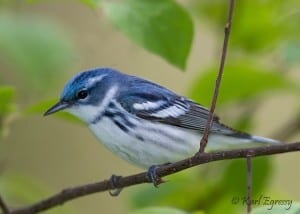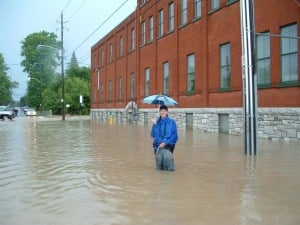Canada is one of the safest, healthiest and best-educated countries in the world. This has not come about by accident. A long-standing commitment to making decisions based on evidence, not politics, has gone a long way to helping to build our prosperity. In recent years, however, the federal government has turned away from science, which put’s the betterment of our economy, our democracy and our natural environment at risk. The environmental challenges we face as a country – and a planet – require a fully engaged science community to help interpret complex phenomena like climate change to the public. This, however, is happening far less than ever before.
Nowhere is the problem more acute than with regard to communication restrictions on taxpayer-funded federal scientists. I will share two typical examples. In 2012, Environment Canada denied permission for Philippe Thomas to be interviewed about his research on toxins in fur-bearing animals living near the Alberta oil sands. In 2014, a request from the Canadian Press to interview Dr. Max Bothwell about his research on algal blooms was turned down.
Funding cuts and the shutting down of facilities and programs are also inflicting a great deal of damage. Seven research libraries with the Department of Fisheries and Oceans (DFO) were closed in 2013. Much of the collection of 660,000 journals, books, taxpayer-funded reports and other items was either discarded or destroyed. According to eyewitness accounts by employees and images recorded by Radio-Canada, numerous documents were “hastily” loaded into dumpsters. DFO also axed the Ocean Contaminants and Marine Toxicology program in 2012, closing labs in five locations. Fifty-five scientists and staff who studied toxic chemicals in marine mammals and fish were laid off. An internal Environment Canada report made public in 2010 stated that weather and climate data had deteriorated so severely that the government weather service could not ensure safety and security of Canadians. The report expressed concern about cuts to weather service programs that have left Canada with lower-quality climate data.
Disregard for science can also be seen when it comes to threatened plants and animals. Since January 2011, 67 species have been recommended for listing under the Species at Risk Act (SARA), but no decisions have been taken on any of them. Dr. Sarah Otto, director of the Biodiversity Research Centre at the University of British Columbia, believes the government is intentionally holding up the listing process. A listing by the Committee on the Status of Endangered Wildlife in Canada (COSEWIC), a government-appointed expert panel, is a necessary first step for the government to move to protect a threatened species and its habitat. While 486 of 686 known at-risk species have been listed under SARA, a meager 13 of these have recovery strategies fully drafted.
Party positions
I have taken the parties’ positions on science from the results of a questionnaire distributed by Evidence for Democracy, a non-partisan, not-for-profit organization promoting the transparent use of evidence in government decision-making in Canada. The Conservatives did not respond to the questionnaire. The commitments below therefore apply to the Liberals, NDP and Greens.
· All three parties are committed to opening up communication between government scientists and the public.
· All are committed to creating a new government office to provide science advice to Parliament and ensure that policy decisions are based on the best available evidence.
· All three pledged to reinstate the mandatory long-form census.
· Liberals are committed to reversing funding cuts to government ocean science and monitoring programs.
· Green Party is promising $75 million annually to hire scientists
· The NDP would bolster the environmental assessment process
Climate change
Nowhere is a strong commitment to science more important to Canadians than when it comes to climate. Once again this year, we have seen more of the kind of events long predicted by climate scientists: unprecedented wildfires in much of western North America, never-before-seen rainfall and flooding in the southeast U.S., a record warm year for the planet as a whole, etc. On a positive note, it seems that action on climate change is finally getting some attention, thanks largely to interventions by President Obama and Pope Francis. And, according to results from Vote Compass, CBC’s online voter engagement survey, Canadians say the environment is the second most important issue in this election campaign, after the economy.
The world will once again have an opportunity to address climate change at the United Nations Climate Change Conference (COP 21), which will take place in Paris in December. Its objective is to reach a legally binding agreement on climate that would include all the world’s nations. The overall goal is to reduce greenhouse gas emissions to a level that would limit global temperature increase to 2 °C above pre-industrial levels. This is considered the highest amount of warming the planet could tolerate and still avoid the most serious effects of climate change. These include increasingly severe storms, extreme heat waves, rising seas, massive species extinction and huge numbers of climate refuges. Based on current emissions trajectories, the world is headed for about 5 C of warming.
Elizabeth May, Justin Trudeau and Tom Mulcair have all said they will attend the Paris conference. However, Stephen Harper has not yet made any commitments. Canada’s reputation on the world stage has been severely damaged by the Harper government’s refusal to take serious action to tackle climate change.
Party positions
Based on news reports and party websites, here is what I was able to glean.
Conservatives
· Favor sector-by-sector regulations to cut greenhouse gas emissions. Oppose any form of tax on carbon.
Committed to reducing Canada’s emissions by 30 per cent below 2005 levels by 2030, largely relying on provincial measures to meet that goal.
· Have approved the Enbridge Northern Gateway oilsands pipeline that would run from Alberta to the coast of Kitimat, B.C.; support the proposed Energy East pipeline project; support proposed Keystone XL oilsands pipeline from Alberta to U.S. Gulf Coast
Greens
Would bring in a revenue-neutral carbon fee based on the carbon content of fossil fuels. Proceeds would be returned to the public as fiscal dividend
Committed to reducing emissions 40 per cent below 2005 levels by 2025
Oppose all three pipeline proposals
Liberals
Would establish national emissions-reduction targets and give provinces money to help them design their own emissions policies
No specific targets will be set before meeting with the provinces
Oppose Northern Gateway pipeline; support the Keystone XL project; are withholding judgment on Energy East
Within 90 days of Paris conference, would formally meet with premiers to establish a pan-Canadian framework for combating climate change.
NDP
Would introduce a Canada-wide cap-and-trade emissions reduction program that sets concrete emissions limits. Provinces with programs equal to or better than federal objectives could opt out. Revenue from cap-and-trade would be invested in a greener energy sector
Would reduce greenhouse gas emissions by 34 per cent below 1990 for the 2025-30 period
· Oppose the Northern Gateway pipeline and Keystone XL pipeline; say Energy East pipeline can’t be approved without more stringent environmental review process
· Would hold a meeting similar to that of the Liberals after Paris conference
Elections are the best opportunity most of us have to take action on climate change and respect for science. The politicians we elect will make the decisions on all of these issues. Please be sure to vote.

